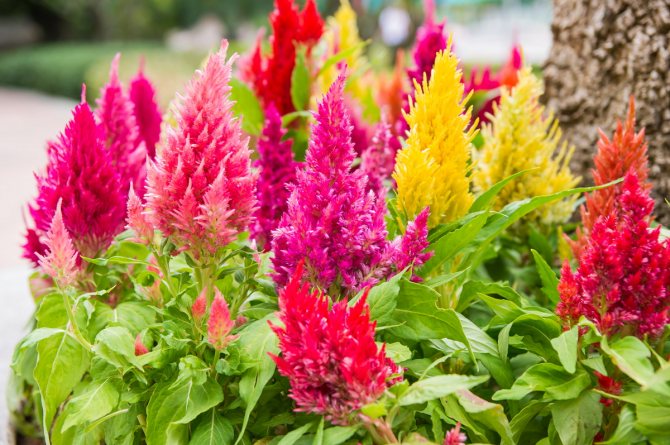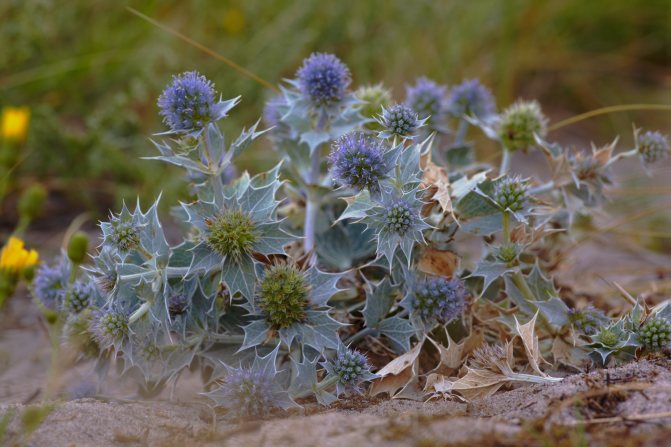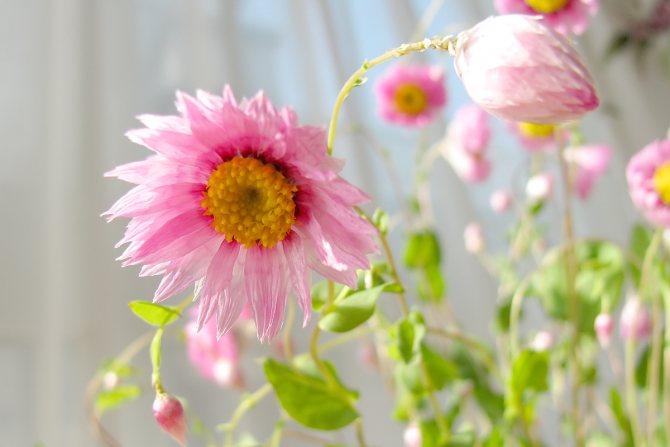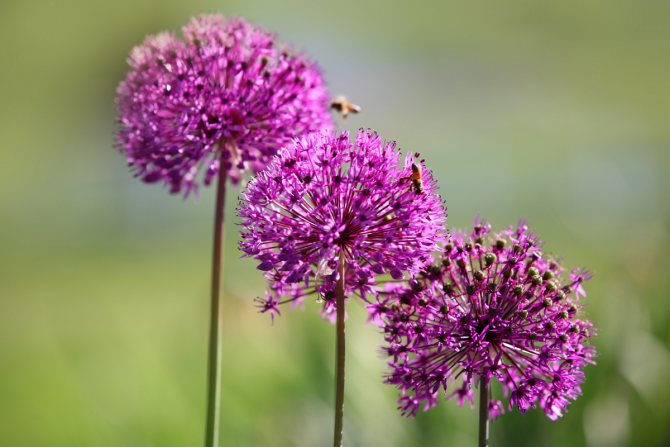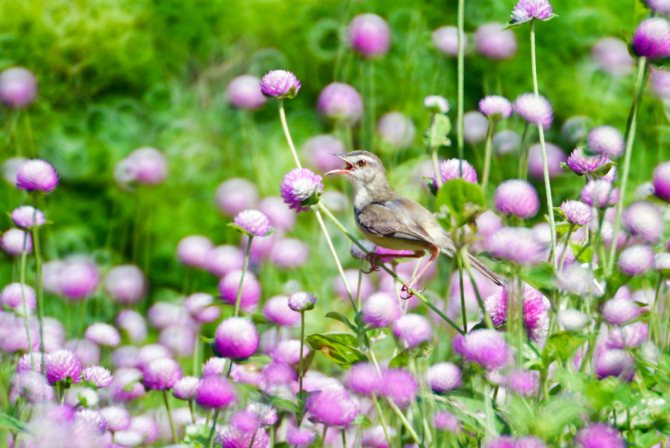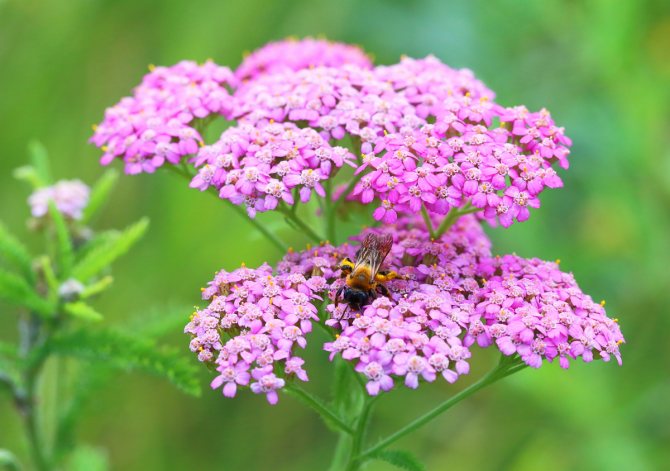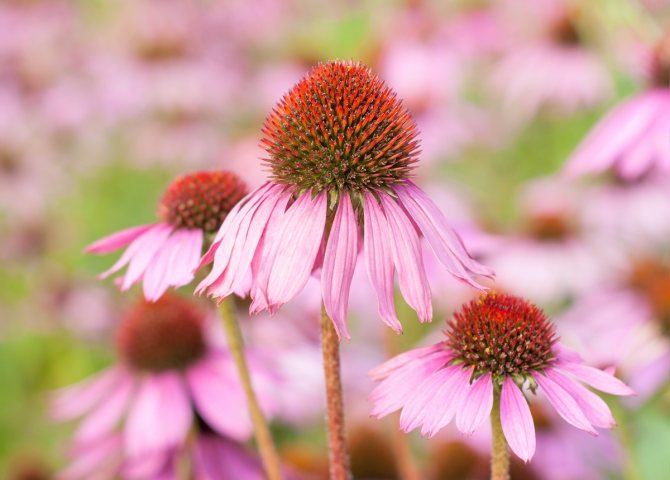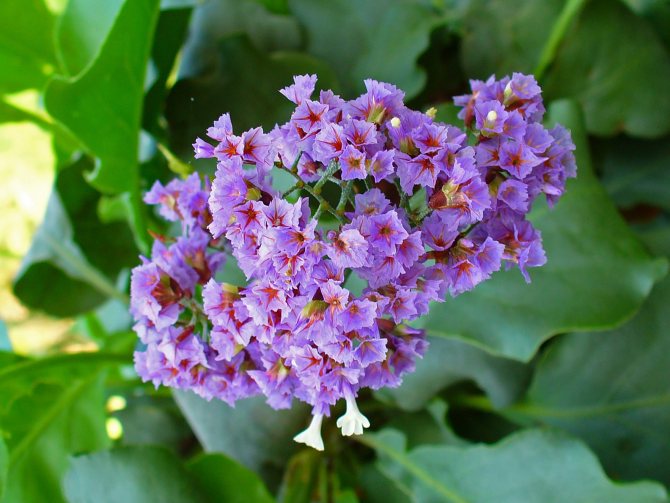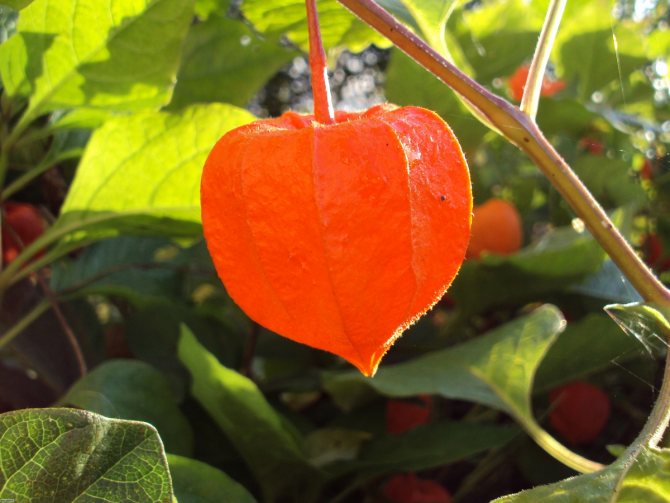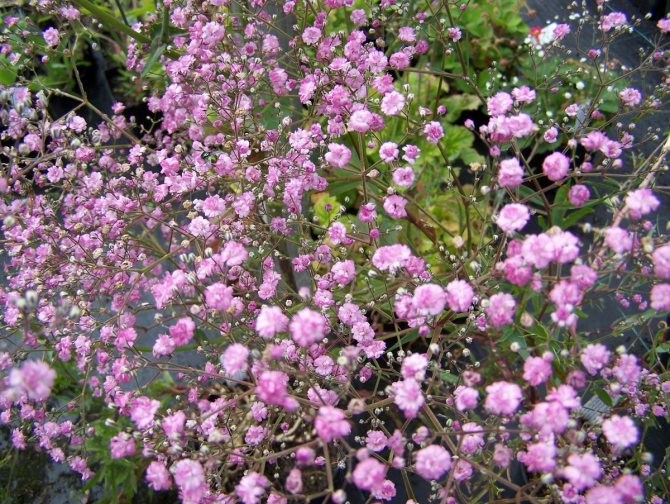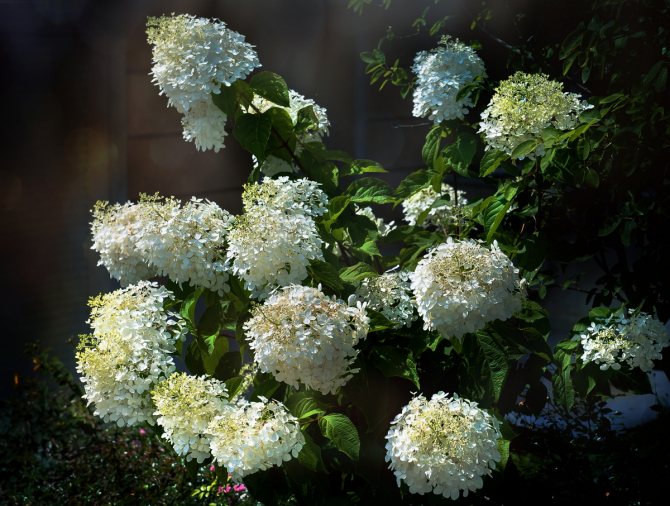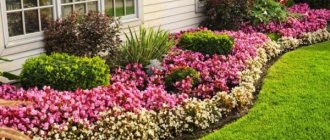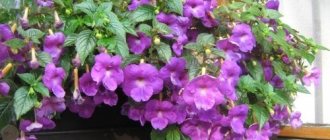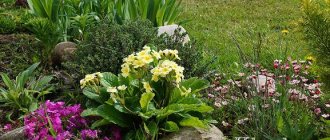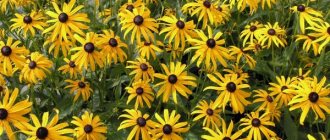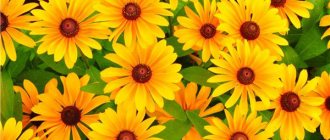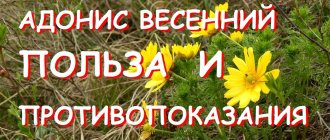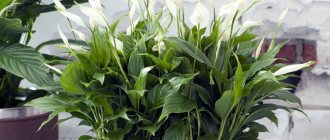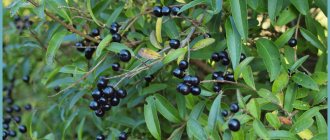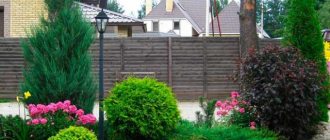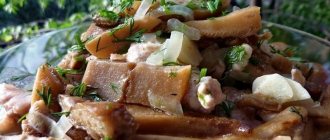Dried flowers have long taken root in our homes in decorative vases and floor vases. It is especially pleasant to create compositions yourself from dried flowers grown by your own hands. Growing dried flowers has no specific features, basically, these are plants that keep their shape well when dry, there are many of them among annuals and perennials, as well as wild plants.
I invite you to a group for summer residents, gardeners: "Country hobbies"
Dried flowers
Annual dried flowers
It has always been believed that the definition of dried flowers means exactly annuals. Even other definitions can be attributed to this category: “true dried flowers” or “immortelles”.
If we talk about the plants themselves, then from this category for the formation of bouquets and in landscape design they use:
Gelichrizum
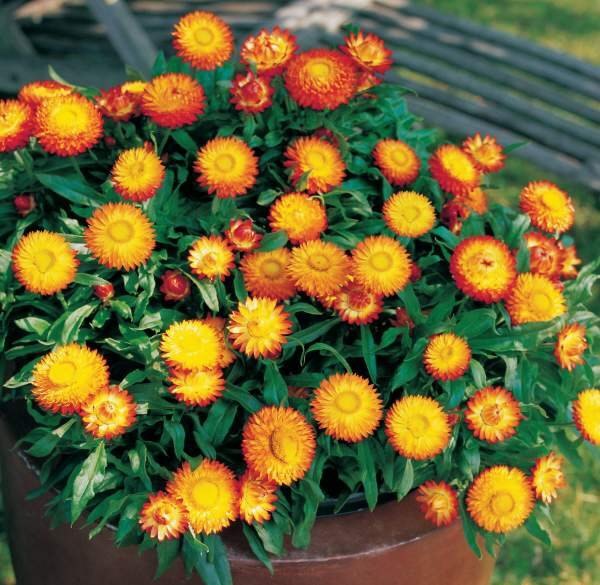
This plant confidently holds the lead in popularity from this subgroup. This is quite natural, since Gelichrizum has the largest variety of color palette. Today, every landowner can purchase this plant with this color:
The height of Gelkhrizum can vary from 25 to 80 centimeters.
Helipterum
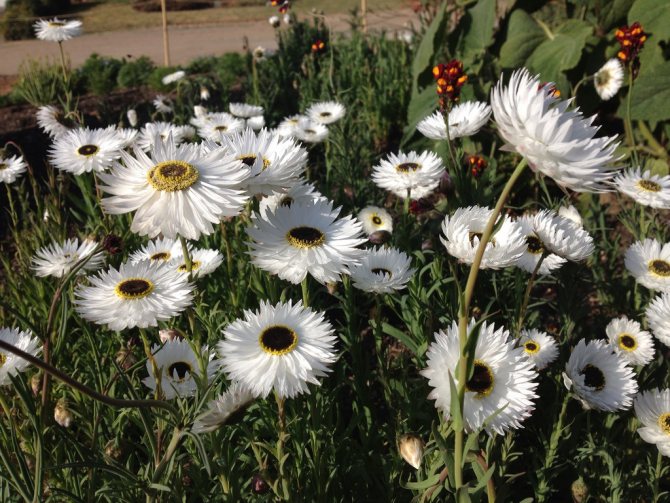

Abundant flowering of Helipterum roseum
This type of dried flowers is not much different from the previous Gelikhrizum. But at the same time, a small difference lies in the fact that the middle is clearly drawn in them: yellow or dark.
By itself, Helipterum includes one advantage: it fits perfectly into any bouquet.
If we talk about using it in landscape design, then it is not uncommon to find it in rockeries, rock gardens. The height of its bush does not exceed 45 centimeters.
Xerantemum
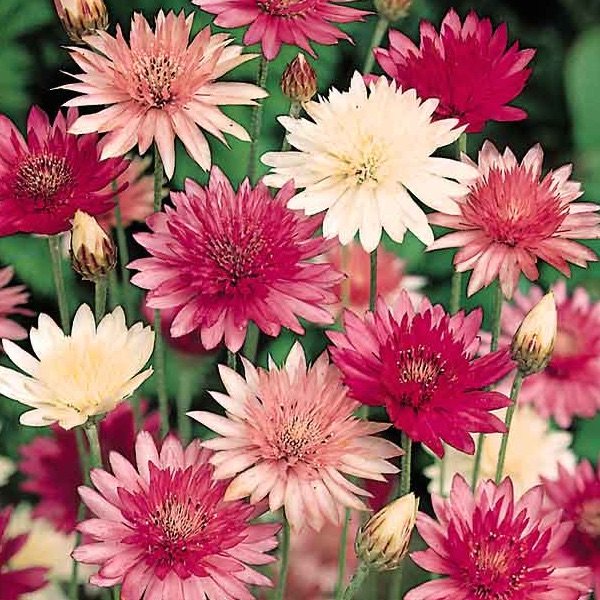

This variety of annual dried flowers is completely identical to the above varieties, both in shape and color.
Care and cultivation
Annual dried flowers require the same care, regardless of their variety.
In the process of growing them, they must be fed with mullein or rabbit dung. This is primarily necessary in order to get excellent inflorescences when creating landscaping or in bouquets.
To do this, you must initially plant them either in a wooden box or in pots, and after they grow up to about 15 centimeters, transplant them into open ground.
When sprouting or transplanting into the ground, it is necessary to regularly spud them around the trunk. In the event that the ground is solid, it can harm them, and they will simply dry out or wither.
In landscape design, you can see how they look:
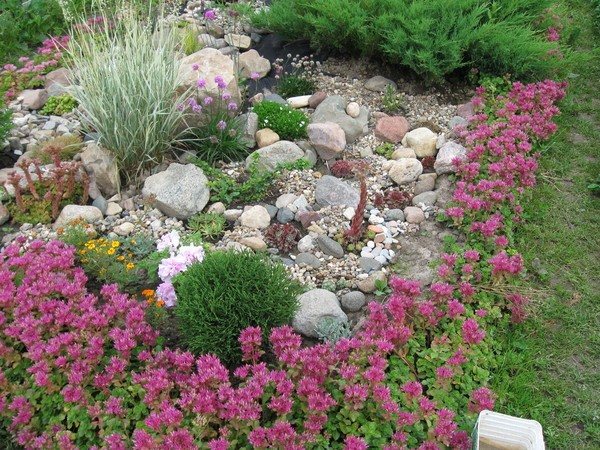

Any dried flowers look great in rockeries
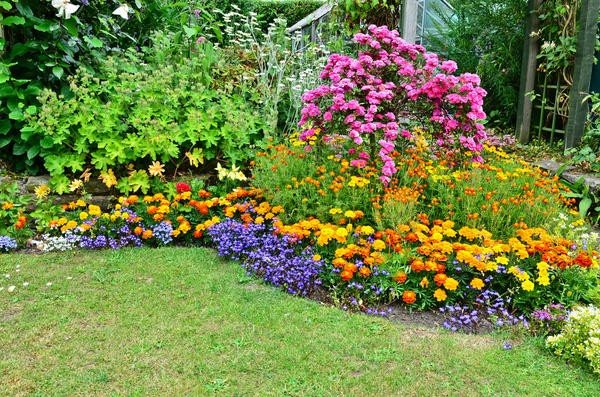

Dried flowers are also able to successfully complement any brighter annuals or perennials.
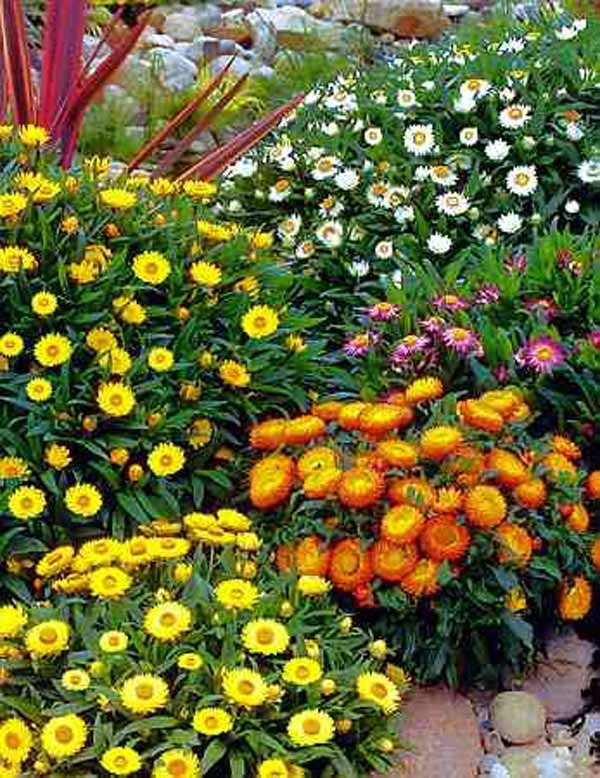

Curtains of helihrizums as the only bright accent
Treatment of diseases
The healing properties of the immortelle herb help to get rid of a number of diseases. The infusion of this plant is an excellent remedy for toothache. In addition, dried flowers are often used as a heart remedy; it is often prescribed for various nervous disorders. Helps dried annual and with cholecystitis and low acidity of gastric juice.
By the way, this plant is actively used in scientific medicine! Dried flowers are part of the unique collection of Zdrenko, which doctors prescribe to patients for the treatment of papillomatosis of the bladder. In folk medicine, immortelle is often used for dermatoses. There is an opinion that decoctions and infusions of this medicinal herb are able to heal even mental disorders. The plant of the Aster family also helps to cleanse the body of cholesterol.
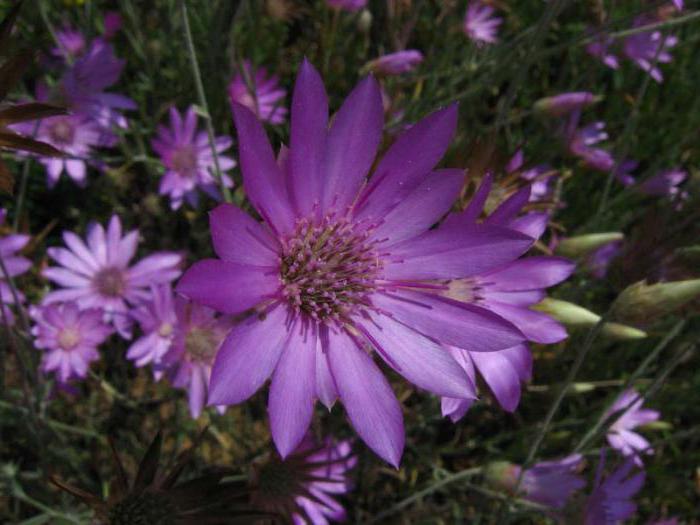

Perennial dried flowers
Plant varieties from this subgroup are very easy to dry, and also fit perfectly into any composition.
The most popular and rare perennial dried flowers are considered to be:
Anafalis
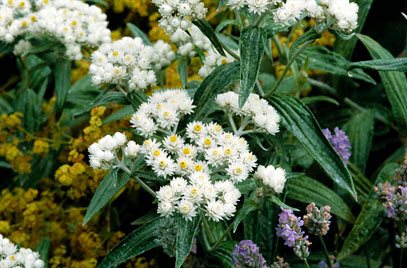

The bluish-white inflorescences of this variety of flowers can completely complement any composition. In the event that landowners are going to use it in landscape design, it is recommended to buy already grown plants, since it is very difficult to grow from seeds on your own.
It is recommended to cut the inflorescences, if necessary, drying immediately after they bloom. If this is done late, it will be problematic to dry, since the leaves may crumble.
Gypsophila


Hyposphilus in a bouquet
The perennial plant has small and non-double flowers. At the same time, the very type of inflorescence from this variety of plants has a delicate appearance, which is able to create the illusion of a kind of white cloud.
When growing it on your land plot, it must be borne in mind that it should be grown from seeds and immediately planted in open ground. This is due to the fact that she does not really like her transplant.
If it is necessary to dry it, this is done very simply. To do this, it is enough to cut the branches, where the flowers have already completely blossomed, and then put them in a vase, and wait until they are completely dry.
Yarrow
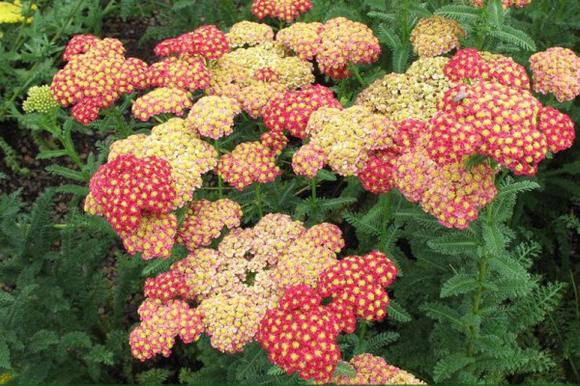

Today in nature there are many varieties of yarrow with different color shades: white, yellow, red, and so on.
This plant is unpretentious, and does not require any special care.
As for cultivation, its seeds are immediately planted in open ground from September to mid-November. Having planted in the fall - next summer it will delight the eye with its beautiful inflorescences.
"Pearl"
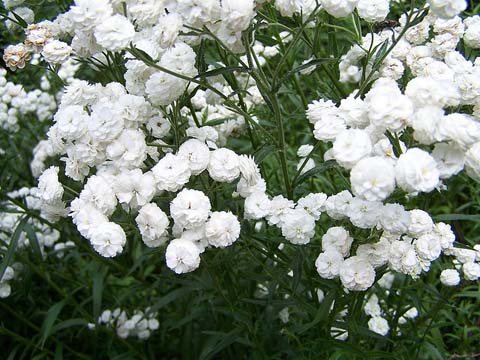

Yarrow ptarmica "The Pearl", pearl mussel.
This plant also has a popular name - sneeze herb. Another name is Ptarmika. It is a species of yarrow. It should be noted that in appearance the Pearl does not look like a yarrow. Agree, large terry inflorescences are more reminiscent of gypsophila.
But if we talk about the very care and planting, then this process is very easy. Having landed it on the open ground, it is necessary to monitor its processes every week, since it grows at an incredible speed.
To create bouquets from this plant, it is necessary to collect only those branches on which the flowers have completely blossomed. In the event that this is done 2-3 days after the dissolution, they will darken.
Lavender
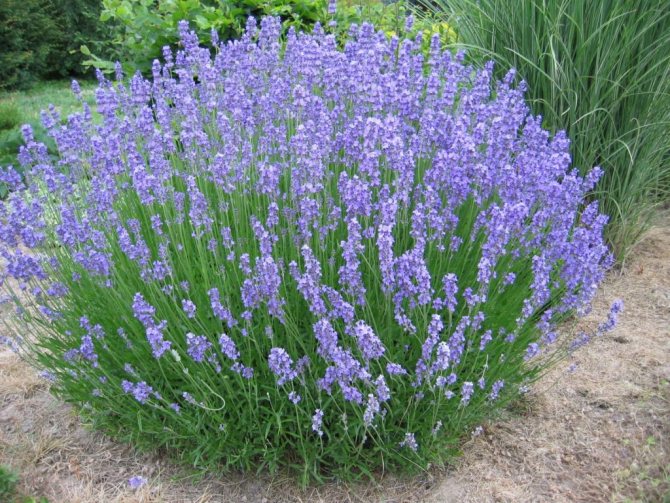

This variety of dried flowers is used in landscape design, and in the bouquets themselves, not only because of their beautiful appearance, but rather, on the contrary, because of the incredible aroma.
If you use it in dry bouquets, it is necessary, after cutting the branches, to place them in a dark place, hanging them on the opposite side from the flowers. If you dry them in the light, the color shade will quickly lose its natural beauty and fade.
Astilba
A wonderful perennial plant that includes dense inflorescences in the idea of a panicle, which can be of such color shades as: pink, lilac, white or red.
For dry bouquets, this plant should also be dried in a dark room so as not to lose its natural beauty.
It should be noted that it would be better to use them in combination with several varieties of other colors, otherwise in a single version the composition will be very boring. Although the photo on the left refutes this.
Care and landing
Perennials do not require any special care. It is enough to ensure that the land does not dry out, and in the summer, provide abundant watering.
Growing is quite simple: you can buy ready-made cuttings or grow from seeds.
Seeds are usually sown in winter, and in spring next year they will be able to delight the eyes of their owners.
From perennial dried flowers, you can achieve the following compositions in landscape design:
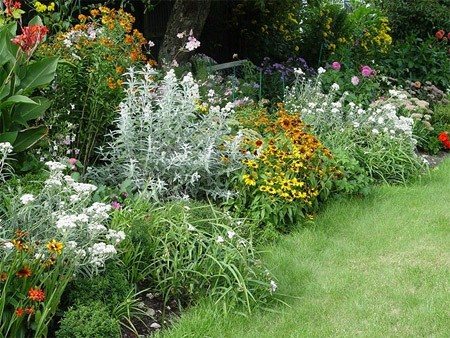

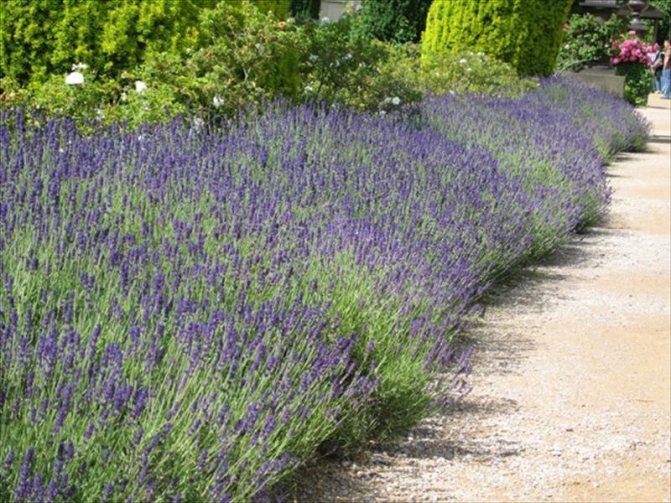

Lavender fits very well in English gardens. In this photo, she is framing a park path.
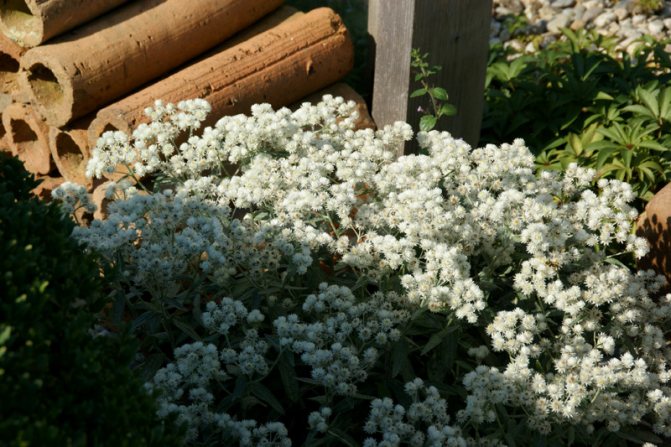

Anafalis is able to create a fairly dense coating.
Growing flowers for a winter bouquet
Some weather-resistant annuals, thorns and most cereals sow before winter. Most types of heat-loving plants are planted with seedlings in warm ground. But there are those that manage to develop from seeds sown in late spring.
In order for the flowers to grow well-formed, without deformations, try to organize proper care for them. The recommendations can be found on the packaging with the seeds, there is such data in the special literature, as well as on the Internet.
It is necessary to grow dried flowers with the introduction of complex fertilizers. This will allow you to get full and abundant flowering with developed peduncles. These plant species are fed three times per season. It is not necessary to water such flowers and cereals, since most of them do not tolerate waterlogging of the earth.
Bulbous dried flowers
Bulbous dried flowers are nothing more than a lilac decorative onion. It is grown in almost all gardens from mid-May to late autumn.
Many make the mistake when, after dropping the inflorescences, it is sent to the heap for further disposal.
In most cases, summer residents use the fast-growing Aflatunsky onion, in rare cases: Christophe or Schubert.
In order to use it in a dry bouquet, it is necessary to cut it off before the time when the onion will have full disclosure of the inflorescences. At the same time, it is necessary to pay attention to the fact that compositions with its combination are formed before drying, otherwise it will break off (too fragile).
In the process of growth, decorative onions can reach a diameter of about 40 centimeters, which makes an incredible impression on others.
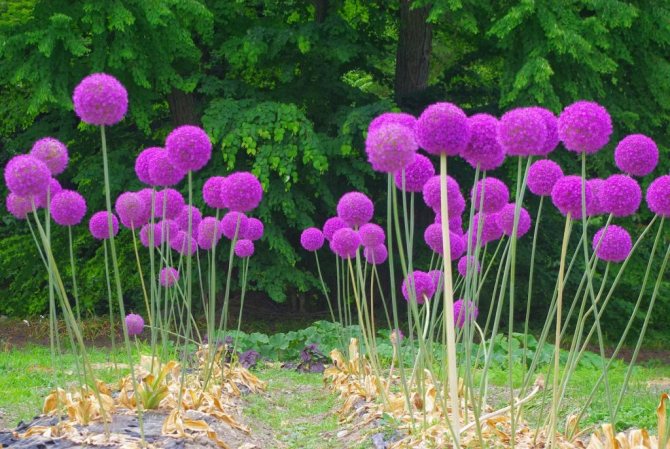

If we talk about the care itself, then it is enough here to make sure that there are no extraneous grass (wild) near these plants. It is enough to remove the weed within a radius of 10-15 centimeters around the trunks.
Particular attention must be paid to watering. These plants do not like abundant watering, but also dryness. For this reason, it is recommended to water it every 3 days in summer, and in other seasons (of course not in winter) - once every 5 days.
The cultivation is very simple - small holes are made or a ditch is made and the seeds are laid out. Germination appears after 10 days.
If we talk about landscape design, then an incomparable option with a bow can be seen in the photo:
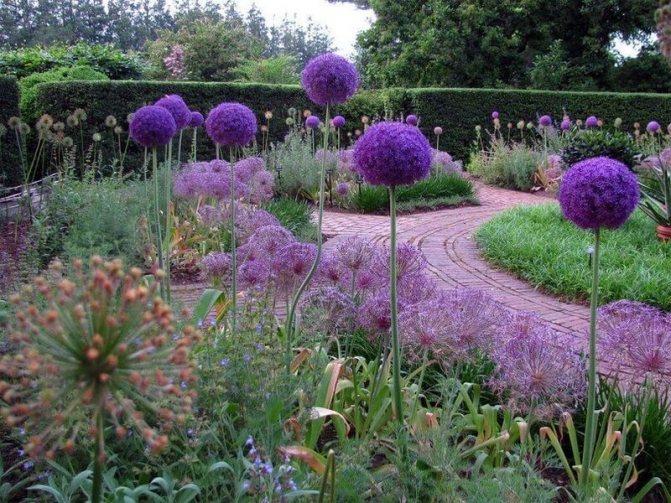

Use of ornamental cereals as dried flowers
First of all, it is necessary to pay attention to the fact that the cereals themselves have such a property as rapid fading. However, they can often be found in the formation of color compositions in various bouquets.
If we talk about the varieties of plants from this subgroup, then there are only a few of them, namely:
- Briza or, as it is popularly called, the Shaker;
- and also Haretail.
Breeze
This type of plant can often be called a pearl country. Initially, this plant has a reddish-brown inflorescence.
However, later on, the hue changes to magenta gray.For this reason, to form bouquets, this plant can be cut in several stages, thus a bouquet of different color shades is obtained from one type of flower.
Haretail
Another name is lagurus. These fluffy spikelets of the plant can perfectly decorate any dry bouquet.
The key point is the fact that this type of plant is very popular with children for some unknown reason.
The cultivation of these dried flowers is very interesting. For this, small greenhouses are made in early spring. Seeds are placed in these greenhouses to a depth of no more than 1 centimeter and watered.
You can make small greenhouses, which are covered with ordinary glass on top. With the correct creation of the greenhouse (the temperature should not be less than 5 degrees Celsius), germination will be already 8-10 days.
In landscape design, these varieties of plants can complement such compositions:
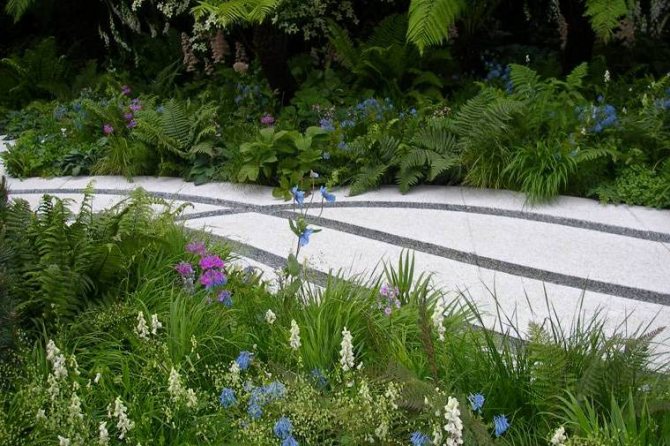

A shaker in a herb mixborder framing the walkway.
Cereals
Lagurus
Dried flowers include not only flowers, but also a number of cereals. So, one cannot fail to note the special charm of the white fluffy panicles (inflorescences) of the lagurus. In the photo, the "haretail" looks more than attractive.
Fluffy cereal is used in dry bouquets and winter compositions. Cut the plant to dry immediately after hatching. If the moment is missed and the lagurus fades, the ponytails will be a dirty shade. Can't fix anything.
To keep the cut material of a fresh whitish color on time, dried flowers are dried in the sun.
Veinik
Any of the types of this cereal is quite decorative. In dry bouquets, both wild and cultivated varieties look great.
Large fluffy reed grass panicles have a rich color range: greenish, cream, lilac, silver-pearl shades and others.
Reed grass is dried similarly to other cereals, in a well-ventilated area and panicles down.
Cereals
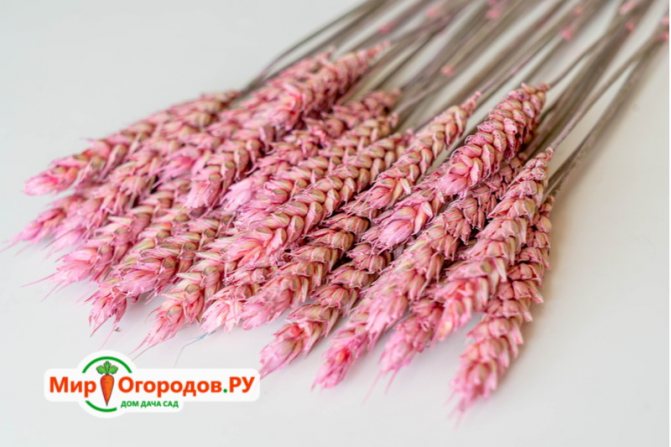

All well-known oats, wheat and rye are cereals with pronounced decorative properties.
For winter compositions, the ears are harvested unripe. In order for the inflorescences with grains to take a natural "drooping" position, the cereals are placed in a container without water.
Landscape decoration with tall dried flowers
Low-growing dried-flower plants are easier to use when decorating a garden or a summer cottage: in flower beds, flower beds, to knock out a path, but bright and noticeable astilbe or bows are so expressive that a mistake will cost more. Let's consider some techniques using the example of decorative onions (Allium) and lavender.
A bright accent is a giant decorative bow. In the photo below, varieties with purple inflorescences are Allium gladiator or Allium globemaster, with lush white heads variety - Allium mount everest. It looks great with hosts, in a mixborder with other lush flowers, next to clipped green hedges. It will be a mistake to supplement it with delicate, graceful, or too small flowers - it will suppress them with its power.
A bright colorful summer passes, many plants fade, gradually autumn colors fill our gardens and parks. How you want to preserve the beauty of flowers and smells of summer longer, to preserve the memory of it for the long winter!
Dried flowers composition
We will be helped with this dried flowers - plants that retain their shape, color, and sometimes aroma well for a long time. Bouquets or compositions from them will decorate the room and will remind you of summer.
The assortment of dried flowers is very large. You can see many of them in nature and collect the necessary material in the forest, in the field, by the river. Others can be grown in your garden, and in the summer they will decorate your site, and in the winter, bouquets of them will refresh your home. Today we will talk specifically about those dried flower plants that are grown in the garden.
Dried flowers in the garden. Photo from the site
How to keep dried flowers for the winter. A bouquet of dried flowers - a piece of summer in the middle of winter
Foreign artificial flowers made of fabrics and plastic have become fashionable now. It seems to be beautiful. And they are skillfully made, just like the real ones. But still the soul does not lie for such flowers. Not flowers - one name.
Somewhere in a store or in a huge station hall - all right. But already in a relatively small office (office, as is now customary) such bouquets no longer look. In a residential apartment, they are completely useless.
The bouquet is good because it is alive, or at least was alive, has its own energy, its own metabolism and often exchanges its own, very valuable substances for us for substances harmful to us that have accumulated in the room. None of the most beautiful overseas fakes can compare with well-groomed geraniums - living, breathing, aromatizing the air with healing soothing phytoncides. And how good are cut flowers in a vase! After all, they are not just pleasing to the eye, they delight the heart, dying themselves, give their energy to us. Have you noticed that if you are with love for them, then the bouquet blows with love. No wonder they do not give their loved ones, close people, paper artificial flowers, but at least one, albeit not very lush, but alive.
From inanimate flowers, bouquets of dried flowers are acceptable in an apartment. Do-it-yourself plants grown from your personal garden, outwardly they are almost the same as they were in summer. How to preserve the moment when life stopped in them? Or maybe it does not stop all winter, it is just that all vital processes slow down so gradually that they no longer need food or water. But the energy in the cells still remained, it seemed to be conserved. This means that such a bunch is not just worthless, but endows us with its energy. And what memories do not these simple flowers evoke at a casual glance! After all, they grew up all summer by the porch. Hundreds of times you walked by them, smiled at them, noticed how they grow up every day even a little. It was you who gave them life, awakened them from the seed, nursed and fed them with your own hands. These flowers were witnesses of your joys, and maybe they once dispelled your sadness, flowers can do it. Is it really possible to compare this modest bouquet with a colored overseas cloth or plastic?
Immortelle flowers or immortelles
Gelichrizum
Helichrysum comes from Australia and Africa, we grow in an annual culture the species Helichrysum bracts (Helichrysum bracteatum). Usually grown its large-flowered form, which is called large helihrizum (H. monstrosum). This is a variety with baskets up to 6 cm in diameter and many leaves of the envelope, making the flowers especially double.
Gelichrizum flowers
Plants from 40 to 100 cm tall with strong stems, forms inflorescences-baskets of various colors. The following varieties are available: 'Fireball', 'White', 'Yellow', 'Scarlet', 'Lotos',' Spark ', one of the tallest -' King size ', grows up to 1 m. Of the undersized ones, interesting are' Leteum '(' Luteum '),' Hot Bikini '(' Hot Bikini '),' Moreska '(' Moreska '), 'Chico Red' ('Chico Red'), 'Pink Porcelain'.
Used in floriculture and other types of gelichrizum: g. Daisy, g. Milford, g. Helmet.
You can choose the seeds of this plant in our market by clicking on the link.
Helipterum (acroclinum)
The most popular are pink helipterum (Helipterum roseum) or pink acroclinium (Acroclinium roseum). An annual plant native to the southwestern parts of Australia, up to 50 cm high. Forms a rosette of leaves, from which stems branch out, occasionally branching.
Helipterum. Photo from the site
Inflorescences-baskets up to 4 cm in diameter are formed by yellow tubular flowers and a wrap of hard white or pink scales - they give the flower a decorative effect. Flowering is short-lived, but abundant.
It has a large-flowered shape with pink-red inflorescences. Known varieties 'Red Bonnie' ('Red Bonnie'), 'Album' ('Album'), 'Roseum' ('Roseum'), 'Yellow stars', 'Bright suns', and color mixtures, including a mixture 'Bonnie' ('Bonnie').
Ammobium
Winged ammobium (Ammobium alatum) is native to Australia. In our climate, this is an annual plant up to 60 cm high, highly branched. Small inflorescences-baskets up to 1.5 cm with a yellow center and white dry petals (in fact, these are wrapper leaves) are very decorative.
Ammobium. Photo from the site
Flowering is long (from June to frost) and abundant.Beautiful in a flowerbed and as part of winter bouquets.
Xerantemum
Xeranthemum annuum grows in the Mediterranean and southern Russia. Strongly branched annuals up to 60 cm high. Baskets of white-pink-lilac shades 3.5-4 cm in diameter. It blooms from mid-summer to autumn. There are double and semi-double forms and varieties: ‘Rose’, ‘Violetpurpur’, ‘Carmine’, ‘Kazachok’ (mixture).
Xerantemum
Anafalis
The most common in the middle lane is pearl anaphalis (Anaphalis margaritacea). This is a perennial plant, stems up to 45 cm high and narrow leaves are covered with pubescence, which makes the whole plant appear silvery. Small baskets (up to 0.8 cm) of white-silvery flowers are collected in inflorescences-shields. The plant is frost-resistant, capable of creeping very quickly.
Anafalis. Photo from the site moj-
Gomfrena
In culture, globular gomphrena (Gomphrena globosa) is most often used - a plant from the Amaranth family. Comes from the tropical regions of America, we are grown as an annual. The plant is formed by highly branched shoots up to 35 cm tall. Small flowers, painted in white and pink-purple colors, are collected in a round or oval inflorescence 3-4 cm in diameter.
Gomfrena
Available in 'High', 'Strawberry', 'Pompom', 'Bright Border', 'Pixie Mix', Gnome Series, 'Buddy White', 'Buddy White '),' Buddy Purple '(' Buddy Purple ').
You can find seeds for growing gomphrene in our market.
What flowers are called dried flowers: 20 of the most popular types
Theoretically, any flowering plant after drying can be considered a dried flower, but from the point of view of floristry, not every plant is able to maintain its integrity and aesthetics after cutting and drying. Most of the "stars" of the flower garden, as they dry out, lose the brightness of colors and the shape of the flower, become fragile and quickly shed their leaves and petals. Therefore, only some special types are used for artistic crafts. In this case, not only buds and blossoming flowers are used, but also seed pods or fruits.
Dried flowers are relatively durable compared to other garden and wild flowers and herbs, but without special treatments, home bouquets and handicrafts can keep fresh for no more than a year. For summer residents, this option is very convenient: choose the species and varieties you like in the spring, make a cut, prepare the material, decorate the house for the winter, and with the beginning of the new season, bring fresh ideas to life.
Most dried flowers are characterized by unpretentiousness to growing conditions and resistance to adverse weather factors. Allocating some space in the garden for these plants, you should not prepare for additional hassle. Most of the species are distinguished by high drought tolerance and photophilousness.
In order not to get confused in the variety of varieties, beginners in this field can choose only a few species to begin with. The following photos and names of dried flowers with a brief description will help in this.
Winged ammobium... Perfect for growing in Central Russia. Forms numerous small baskets. In floristry, blossoming inflorescences with a high shoot are used.
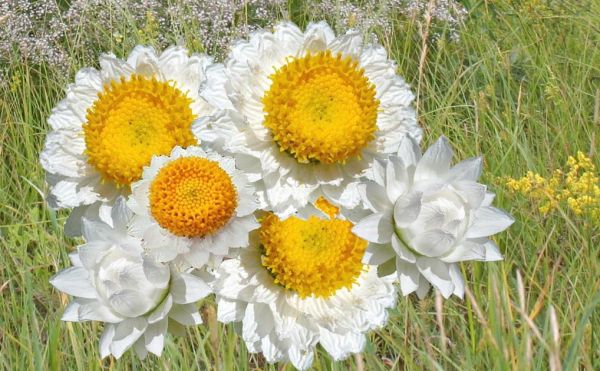

Helipterum... It has several types and varieties that differ in the type, size and color of the inflorescences. Harvested during the period of full disclosure of flowers.
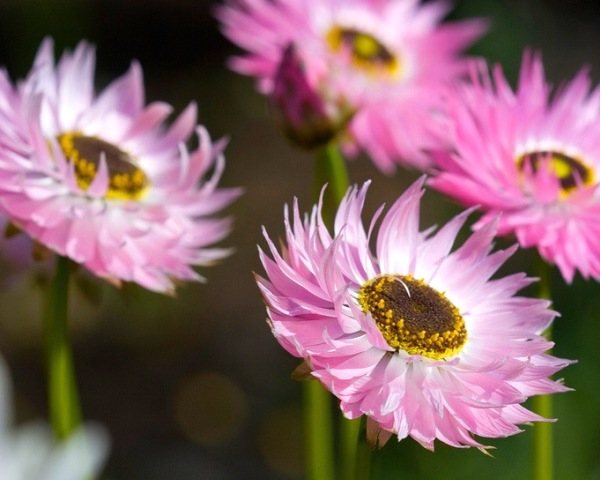

Gelichrizum (immortelle, tsmin, "cat's paws"). It can have simple and double inflorescences of white or red color, varieties with multi-colored inflorescences have been bred. At a distance, the fluffy inflorescences are very reminiscent of the soft paws of cats, which became the basis for the popular name. Material harvesting begins in the half-run.
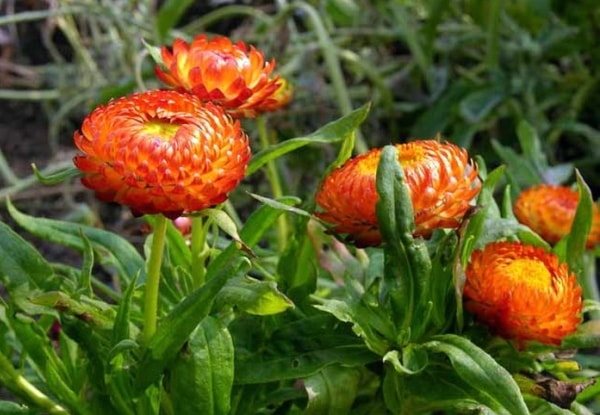

Statice (kermek)... Forms corymbose inflorescences, consisting of small brightly colored flowers. The most attractive are bouquets cut at the height of flowering.
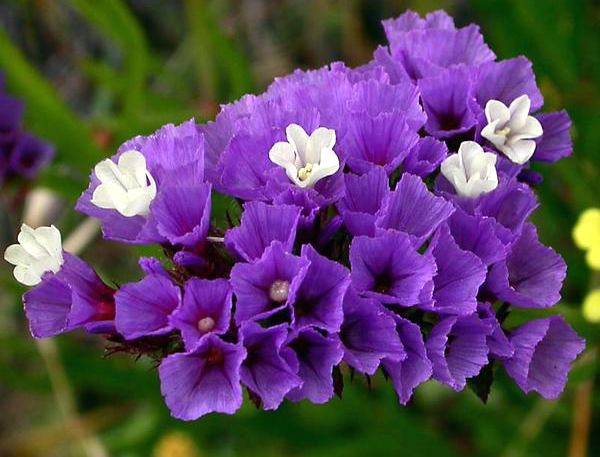

Xerantemum (dried flower)... On thin, highly branching stems, small simple baskets of white, purple, pink or red color are formed. Cut off during the period of complete dissolution of the inflorescences.
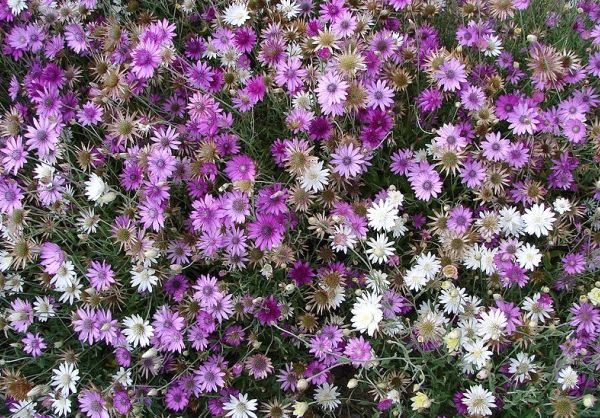

Amaranth... Differs in large racemose inflorescences on a strong stem. For a winter bouquet, brushes are used in the beginning of flowering phase.
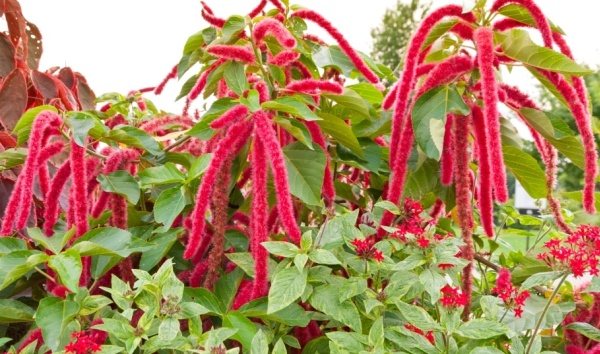

Cartamus (safflower dye). Forms large flowers of yellow, orange and red color, which are cut in full flowering phase.
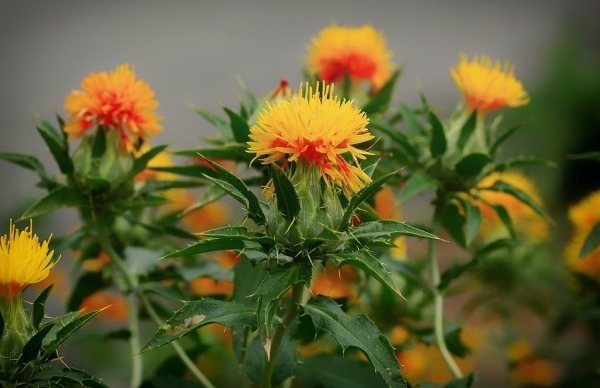

Gomfrena... A very popular dried flower with white, lilac, red and pink globular inflorescences and decorative leaves.
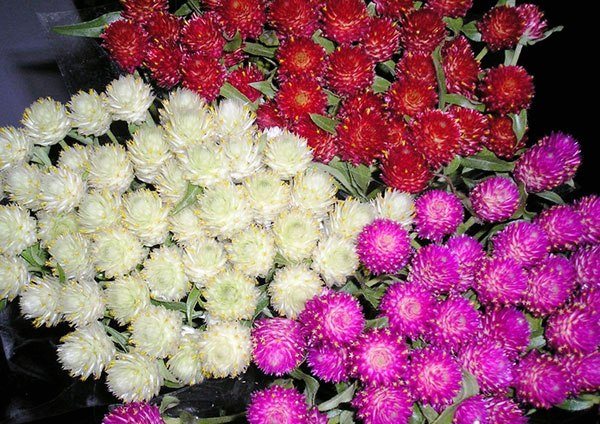

Craspedia... An interesting species with dense, yellow, globular inflorescences on a slender shoot without leaves. For compositions, small bunches of several inflorescences are often used.
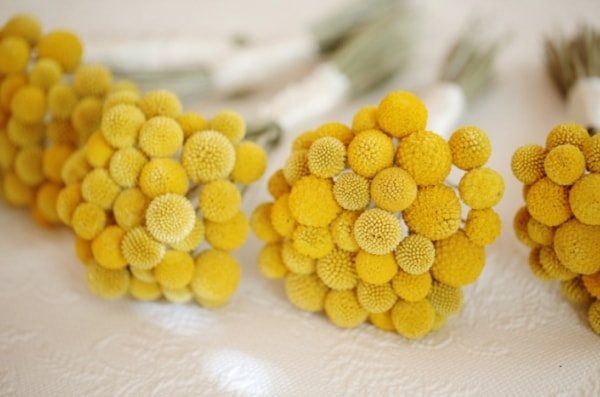

Celosia pinnate... It differs in large inflorescences - panicles, which, depending on the species, can be yellow, orange, red, purple and even pale cream.
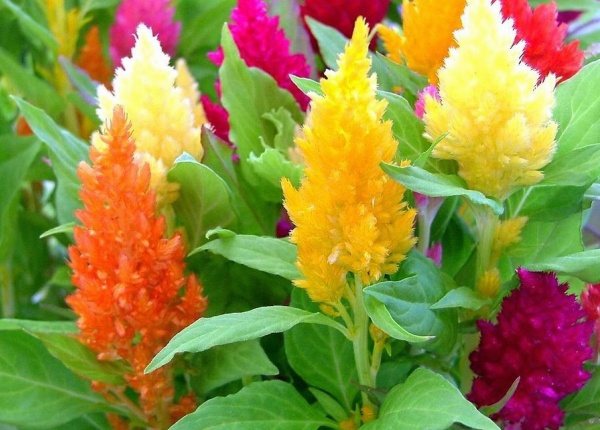

Mordovnik... Refers to "thorns", has large, blue, spherical inflorescences.


Feverweed... Another bright representative of the "thorns". Differs in capitate inflorescences of steel color with openwork leaf wrapper.
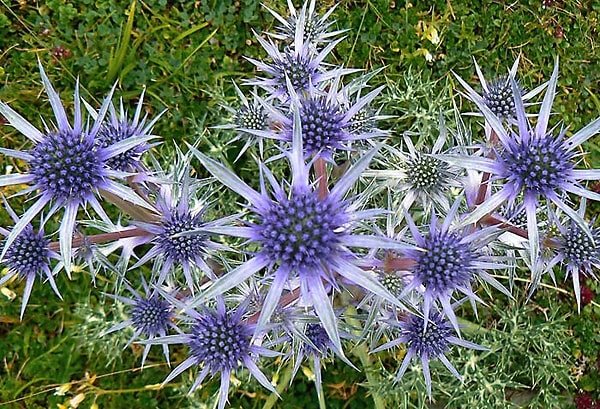

Physalis ("flashlights")... This plant is grown not for the nondescript white flowers, but for fruit, surrounded by enlarged sepals of a bright carrot color. From the outside, these lanterns look like paper.
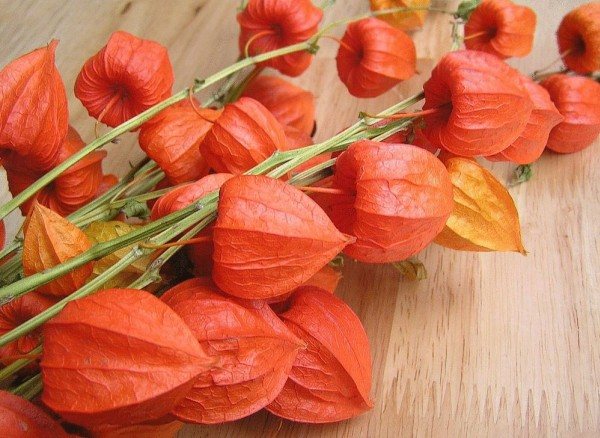

Briza (shaker)... A popular dried flower herb with spectacular numerous spike-shaped milky inflorescences.
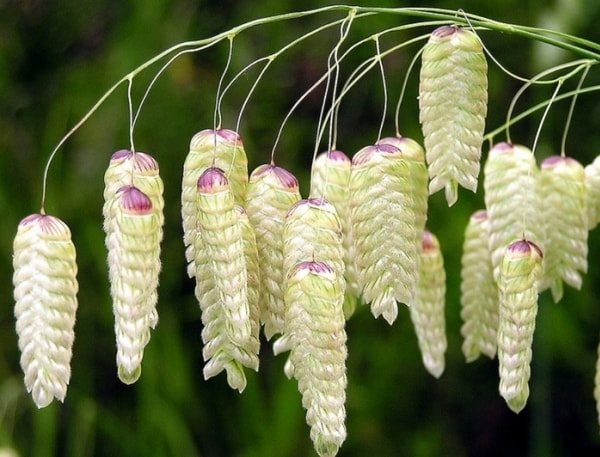

Lagurus (haretail)... Another representative of ornamental grasses with lush inflorescences resembling a hare's tail.
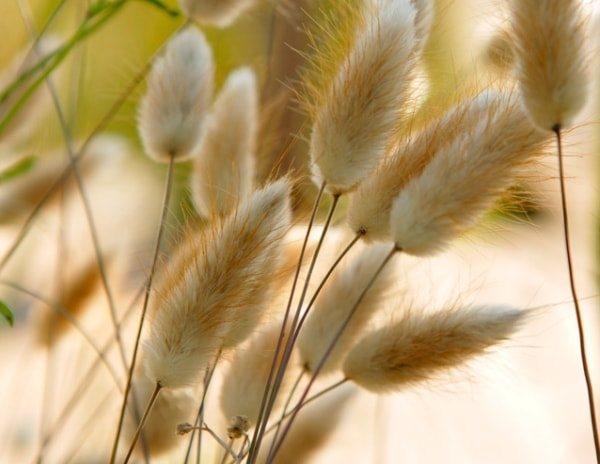

Lunaria (lunar)... One of the few dried flowers that can decorate both the summer garden with its flowering and the house with its fruits. For arrangements, not exactly fruits are used, but the remaining elements after the destruction of the pods. Moon-shaped translucent partitions look very cute.
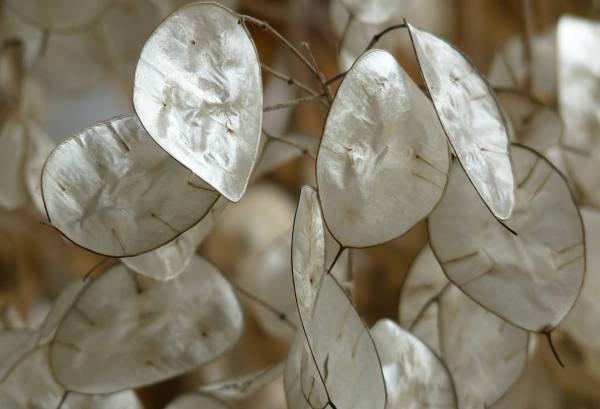

Aflatunsky onion. One of the representatives of decorative bows, which is gaining popularity lately.
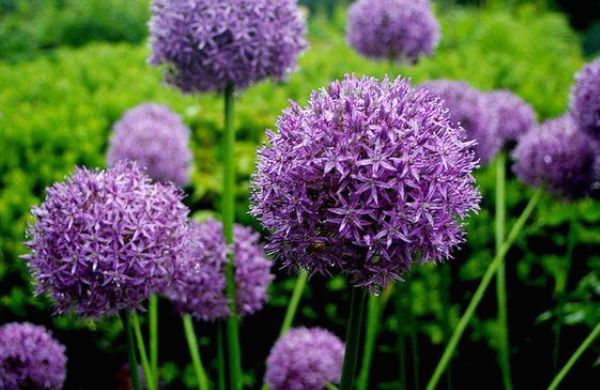

Nigella... Forms delicate single flowers of different colors. For floristry, decorative seed pods are of value.
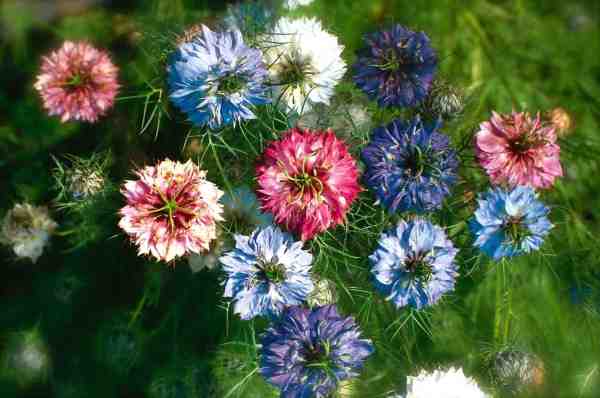

Tansy... Even after drying, this medicinal plant produces phytoncides that purify the air. In central Russia, it is often found in the wild.
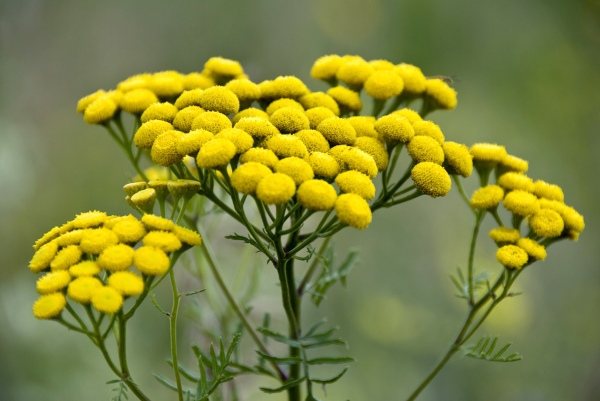

Echinacea Another medicinal plant that will complement the winter bouquet. It is not the inflorescences that are cut off, but the seed head after the petals fall. Gaillardia can also be used instead of Echinacea. Such fluffy balls on a straight leafless shoot will add more originality to the composition.
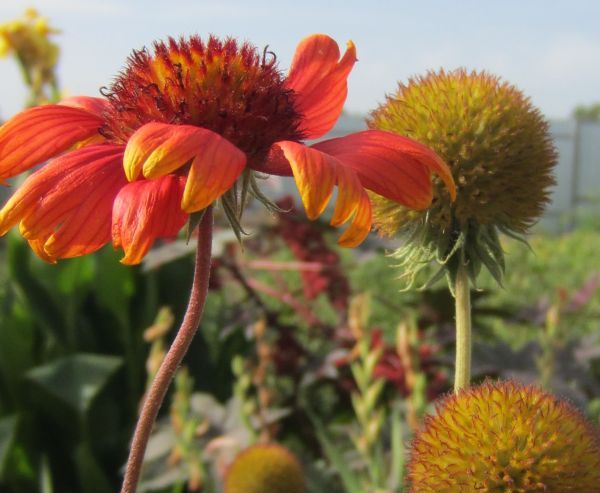

The list of plants from the group of "dried flowers" is not limited to our 20th. All decorative cereals (millet, maned barley, miscanthus, polypogon, spreading fire, etc.) are excellent for winter arrangements. For fragrant bouquets use inflorescences of herbs (hyssop, lofant, lemon balm). Lavender is often present in the compositions. It is not at all necessary to plant the necessary plants in your garden - the suitable material can also be found among the wildflowers.
Yarrow
Two types of yarrow are suitable for use in dry bouquets.
- Yarrow meadowsweet (Achillea filipendulina). Large perennial up to 1.2 m tall. He is very dressed up thanks to the dense and flat inflorescences-shields of golden color. Blooms in July-August.
Hybrid Yarrow
- Yarrow ptarmica (Achillea ptarmica) is better known among flower growers under the name pearl mussel. It is a perennial with a creeping rhizome and shoots up to 80 cm tall. Snow-white baskets 1.5 cm in diameter are collected in loose shields. Flowering begins in July and lasts 30-35 days.
Yarrow ptarmica Pearl mussel is added to dry bouquets to create delicacy and set off other flowers with its white flowers.
There are other dried flowers, which are also called lace, they give the compositions lightness and airiness.Gypsophila is in the first place here.
Gypsophila
In floristry, the most common gypsophila paniculata (Gypsophila paniculata) or kachim. This is a perennial plant that forms lush openwork bushes in the shape of a ball up to 100 cm in diameter. They consist of numerous thin branchy shoots ending in tiny white flowers that bloom in July and bloom for up to 45 days. There are garden forms with double and pink flowers.
Bouquet with gypsophila
A lot of varieties have been bred: 'White Cloud', 'Snow Flakes', 'Carmine', 'Flamingo', 'Mirage', 'Akulina', 'Rosenschleier' ('Rosenschleier'), 'Pink Star' ('Pink Star') , 'Rosea' and others.
You can find a large selection of gypsophila seeds in our market by clicking on the link.
The bright hot summer remained in our memories. Flowers have faded, autumn has painted the world around in all shades of red and yellow. Among the rainy, chilly weather, I want to preserve the smells and beauty of July flowers.
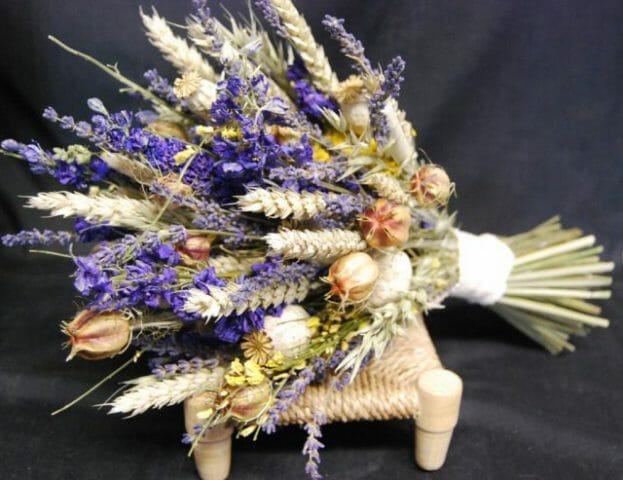

Dried flowers
Dried flowers will help with this. When cut, these plants retain their shape, color and aroma for a long time. They make compositions or bouquets and decorate the premises. Create the right conditions and admire them until early spring.
Dried flowers are varied in appearance. They grow independently in nature. Meet them in the forest, and in the field, and by the river. Some varieties are suitable for growing in the garden. In the summer, they will decorate any flower bed. In the fall, collect them, form bouquets, and continue admiring at home. Let's understand the variety of varieties that are grown by people.
Care features
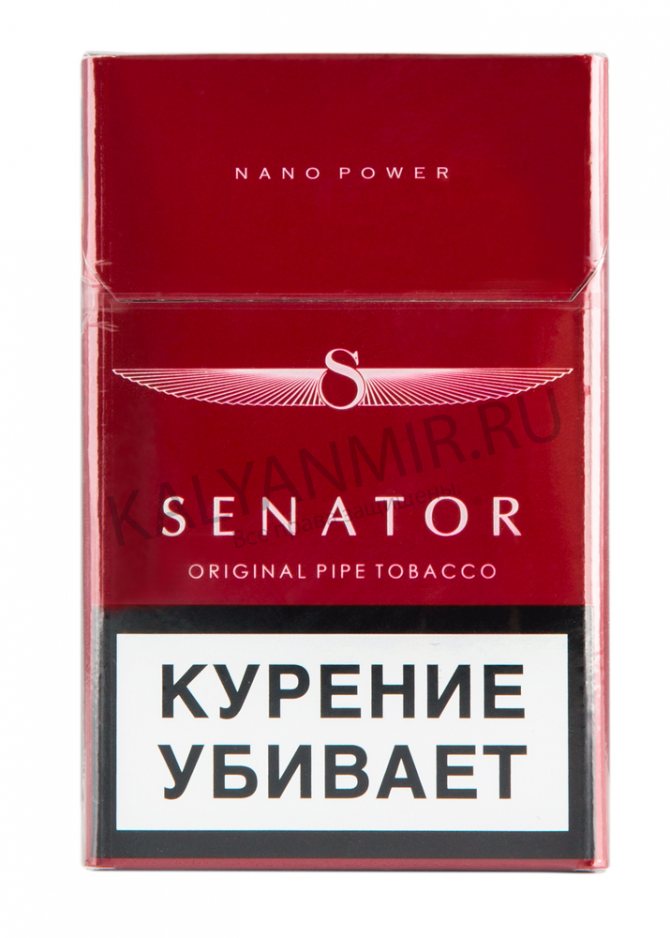

In comparison with other field or garden plants, dried flowers are durable, however, without special processing, crafts from them can retain their freshness and beautiful appearance for about a year, no more. In fact, it is even convenient: you need to choose what you like more in the spring, plant it, then cut it, make bouquets for the winter, and when the first spring flowers appear, throw everything away and force it with fresh fragrant bouquets.
Features of growing ginger at home
Most dried flowers are more than unpretentious to the conditions in which they are grown. Even if the weather is not too to the liking of other gardeners, they tolerate it quite firmly. All that is needed is to give them some space in the garden, and there will definitely be no additional hassle.
The only thing that a dry flower loves is sunlight, and as for watering, most varieties are drought tolerant.
Gelichrizum
The birthplace of the flower is Africa and Australia. In our latitudes, an annual culture of Helichrysum bracteatum or Helichrysum bracts is grown. The most common variety is with large flowers. The basket grows up to 6 cm in diameter. The petals have multiple wrap. Thanks to this feature, Gelichrizum looks soft, velvety.
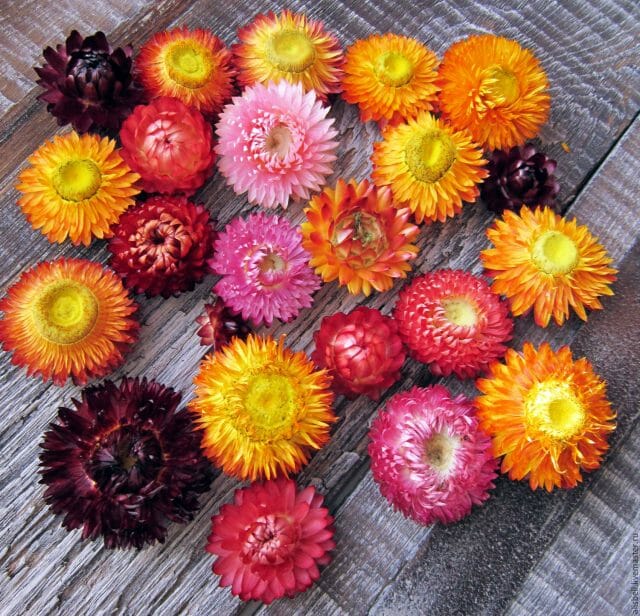

Gelichrizum
The stems are strong. They grow from 40 cm to 1 meter. Inflorescence baskets have different colors. The variety is represented by the following varieties: White, Fireball, Yellow, Lotus, Scarlet, Ogonyok. The largest is considered "King Size". It reaches a height of one meter. The undersized ones include: Hot bikini, Luteum, Moreska, Chico Red, Pink porcelain. Helichrisum helmet-shaped, daisy-shaped and Milford are also popular among gardeners.
Helipterum or Acroclinum
The flower has two names - pink acroclinum and pink helipterum. The birthplace of this annual is the southwestern part of Australia. It reaches a height of 50 centimeters. The leaves are formed into a rosette. Straight and branching stems emerge from it.
The baskets have a diameter of 4 centimeters. Formed by tubular yellow flowers. There is a wrapper of hard white, pink scales. They give a unique decorative look. Abundant flowering does not last long.
Inflorescences are large red-pink.The following varieties are popular in our latitudes: Bright suns, Red Bonnie, Album, Roseum, Yellow stars. Various color mixtures have been developed. For example, Bonnie's mix.
Ammobium
The homeland of this variety is Australia. Known as Winged Ammobium. Our climate allows the annual to reach a height of 60 centimeters. Baskets-inflorescences are small in size and 1.5 cm. The leaves of the wrapper resemble petals. They are dry white, yellow in the middle. They have a decorative appearance.
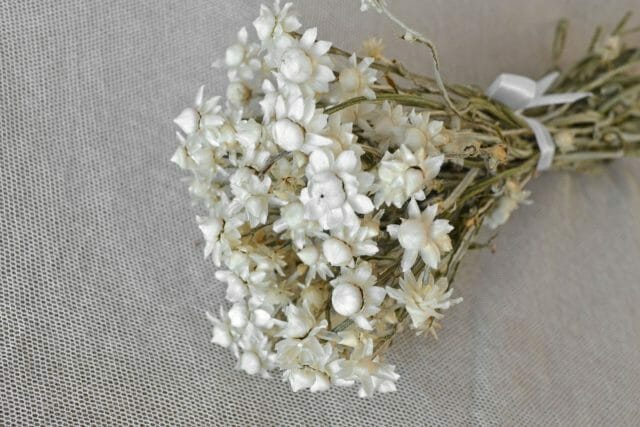

Ammobium
The variety gives abundant flowering. It begins in June and ends with the first frost. Looks beautiful as part of winter bouquets and on a flower bed.
Contraindications
Despite all the advantages and useful properties, the immortelle has a number of contraindications. You should also follow certain rules, adhere to the exact dosage, use all the ingredients that make up the decoction or infusion based on the annual dried flowers.
It is not recommended to consume immortelle during pregnancy and breastfeeding. It is also contraindicated in children under seven years of age. With caution, it is worth using the immortelle in case of individual intolerance.
We bring to your attention the most popular recipes with immortelle.
Xerantemum
First appeared in the Mediterranean and southern Russia. Bears the name Xerantemum annual, strongly branches. It reaches a height of 60 centimeters. Baskets grow up to 4 cm in diameter. They can be pink, white and lilac. There are semi-double and double varieties. The most popular of them are Violetpurpur, Carmine, Rose and Kazachok flower mix.
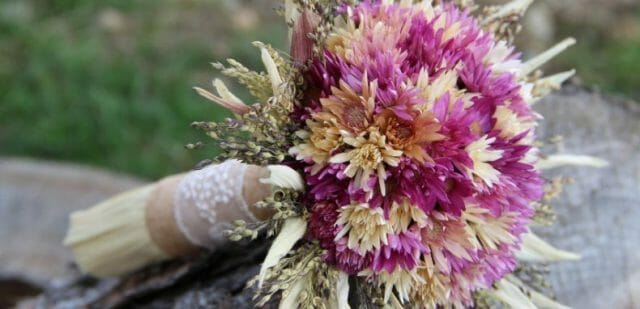

Xerantemum
Anafalis
Anafalis pearl is found in the middle lane. It has narrow leaves. The stems reach a height of 45 centimeters. Fully covered with down. This creates a silvery veil effect. The baskets are small, up to 8 millimeters. The silvery-white flowers are arranged in inflorescence cords. Anaphalis is spreading rapidly. Cold resistant. It continues to bloom in light frosts. The plant is perennial.
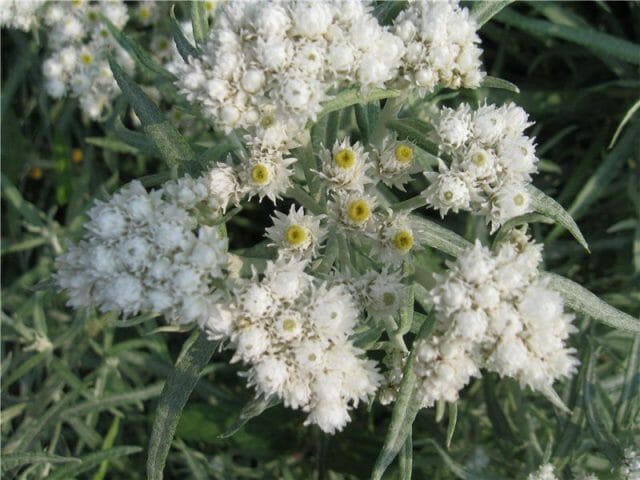

Anafalis
Healing properties
Among the beneficial properties of annual dried flowers:
- strengthening hair;
- improvement of the general condition of the skin;
- cleansing the body of toxins.
It is worth noting that in folk medicine this plant is used as a remedy for insomnia, a sedative. It also helps with heartburn. It is advised to use it for the treatment of hypertension, gonorrhea, colds, cholecystitis. In ancient times, the medicinal properties of the immortelle herb were known, which made it possible to use it in the bites of rabid animals.
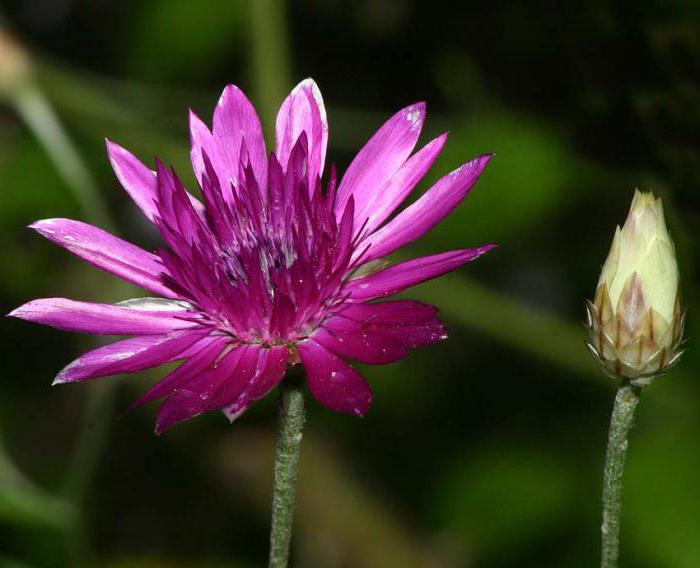

By the way, the immortelle has absolutely no side effects. Due to this, it is part of the gastric and choleretic charges. The only drawback of dried flowers is its taste. Broths with him are very bitter.
Gomfrena
Spherical gomphrene is used as an ornamental plant. Belongs to the Amaranth family. The homeland is considered the tropical part of America. In our latitudes it grows like an annual. Shoots are highly branched. They reach a height of 35 cm. The flowers are small. They can be colored purple, pink or white. Together they form an oval or round inflorescence up to 4 centimeters in diameter.
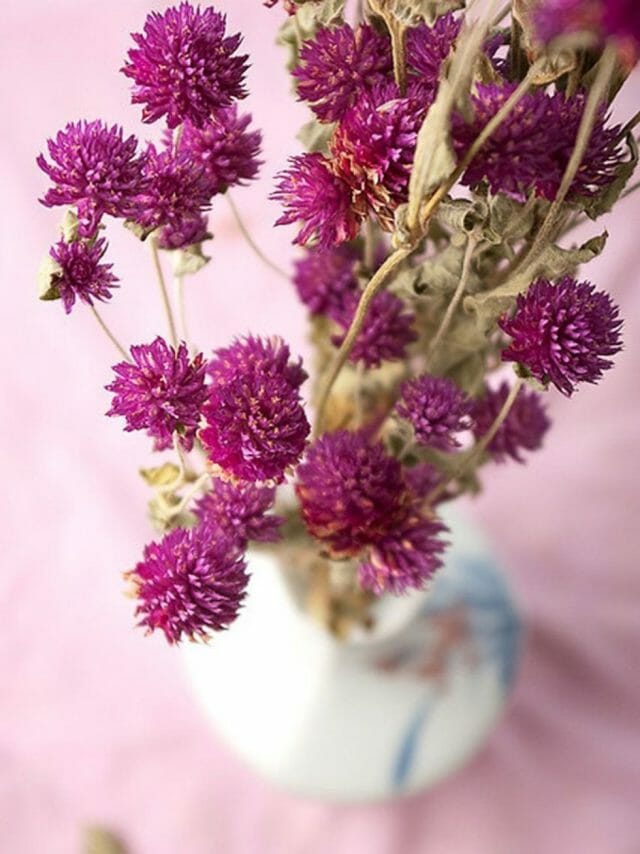

Gomfrena
In our climatic zone, the following mixtures are common: Pompom, Strawberry, High, Bright Border, Pixie Mix, Gnome, Buddy White, Buddy Purple.
Yarrow
To create compositions and dry bouquets, two types of yarrow are used:
- Yarrow meadowsweet. One of the largest perennials. It reaches a height of 1.2 meters. Inflorescence scutes are flat and dense. Painted golden. This gives the yarrow a dressy look. The flowering period is from July to August.
- Yarrow ptarmica. Has a popular name - pearl mussel. The perennial plant has a creeping rhizome. Shoots reach a height of 80 centimeters. Baskets are pure white. Up to 1.5 cm in diameter. Decorated in loose shields.Blooms from July to August. This yarrow variety is used for bouquets. With its help, other elements of the composition are set off, as well as create airiness and delicacy.

